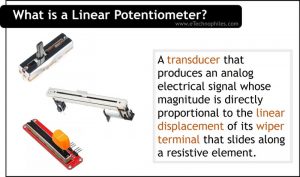Last updated on April 5th, 2024 at 06:22 pm
A linear potentiometer is a type of analog potentiometer with sliding wiper movement along a single axis, either left or right. There are four types of linear potentiometers; Slide, Dual slide, Multi-turn slide, and Motorised fader. There is also a separate category of industrial linear potentiometers.
What is a Linear potentiometer?
It is a transducer that produces an analog electrical signal whose magnitude is directly proportional to the linear displacement of its wiper terminal. This has typically three leads: two for the ends of the resistive element and one for the wiper, which slides along this element.
When the wiper is moved from one end to the other, the resistance between the two end leads changes linearly, allowing the potentiometer to be used as a linear variable resistor. Linear potentiometers are used in a wide range of applications, including position sensing, level sensing, and tension/displacement measurement.
Table of Contents
Linear potentiometer Symbol and Pinout
The symbol of a linear potentiometer is a zig-zag line with an arrow in the middle(American Standard) or a rectangular box with two lines at the end and an arrow in the middle(International Standard).
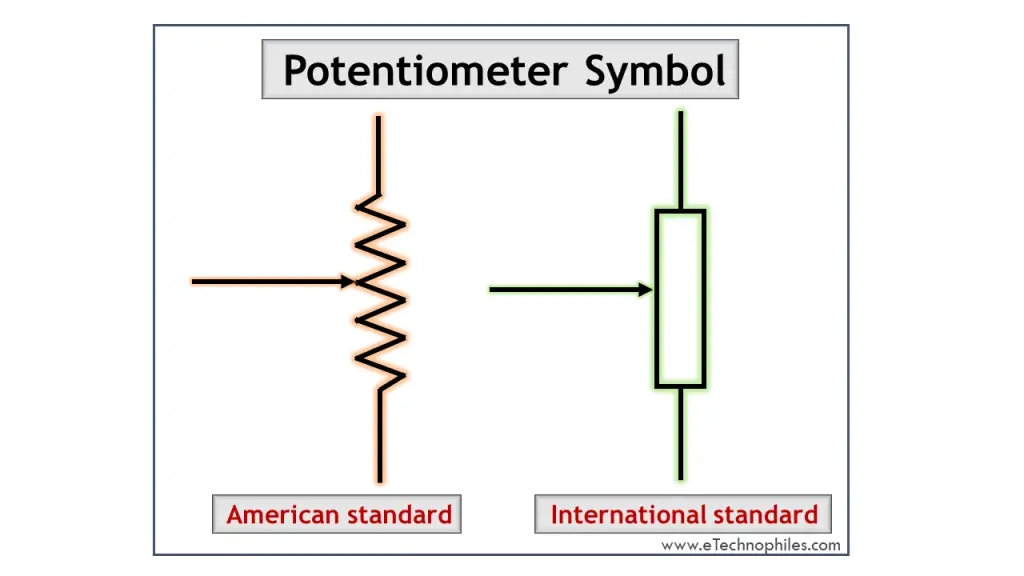
The pinout of the linear potentiometer has 3 pins: Two end pins of the resistor and one wiper terminal pin. The alignment or placement of the terminal may vary from manufacturer to manufacturer.
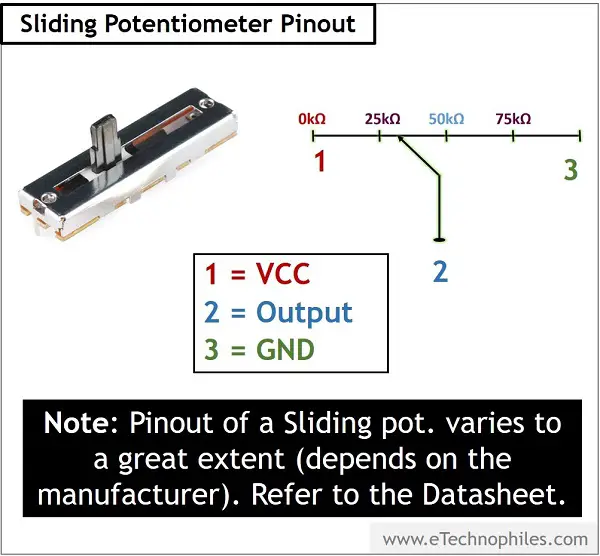
There are only a few linear potentiometers with three terminals in series like rotary potentiometers. Most of them either have end terminals together and the wiper terminal separately or the wiper terminal and one end terminal together.
Hence, it is difficult to identify which terminal is which in a linear potentiometer. So one should always refer to the respective datasheet.
Types of Linear potentiometer
There are four major types of linear potentiometers: Slide, Dual side, Multi-turn slide, and Motorised fader. These four are commonly used in hobby electronics, gadgets, and devices. However many Linear potentiometers are used in industrial applications.
Slide Potentiometer
A slide potentiometer is a type of linear resistor whose resistance is determined by the position of the Slide. They are usually linear, meaning that the resistance value changes at a constant rate as the Slide is moved.
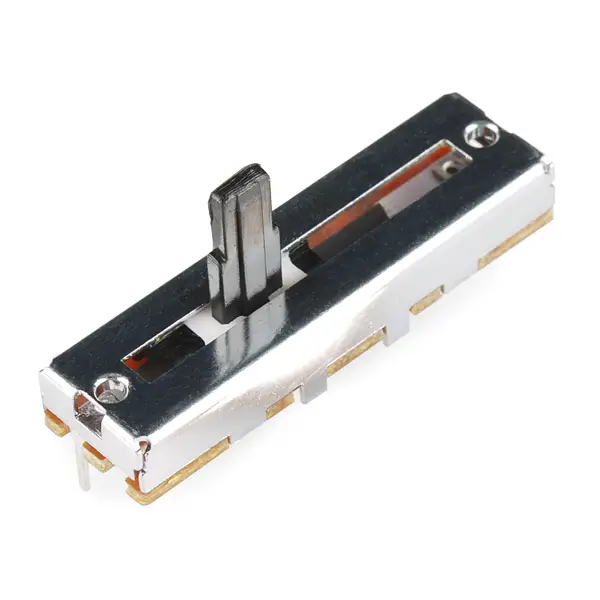
Usually called faders, these potentiometers are made from conductive plastic.
Dual Slide Potentiometer
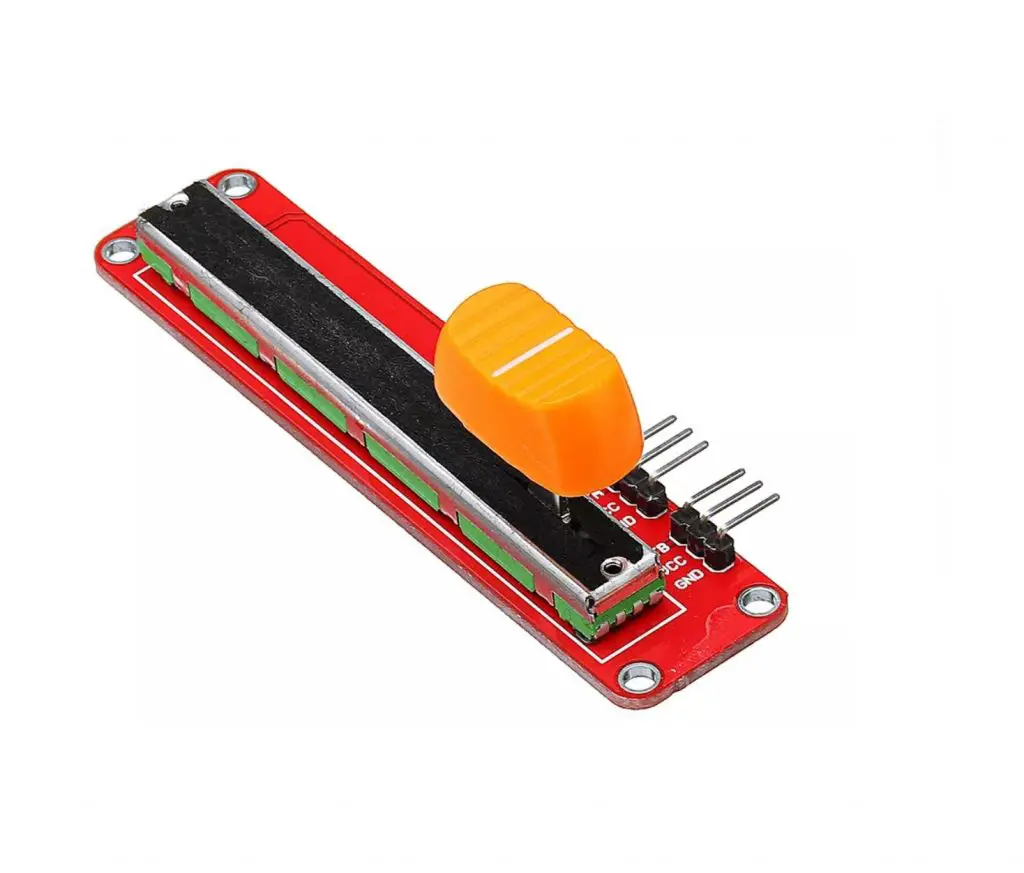
A dual slide potentiometer is a control device that can operate two potentiometers in parallel using a single sliding control. This makes it an ideal solution for applications where control of two parallel channels is required, such as audio volume and balance control.
Multi-turn Slide
What’s the difference between a multi-turn slide potentiometer and a regular pot? A multi-turn slide will give you higher precision as it has multiple rotations (usually 5, 10, or 20). It is ideal for applications where high precision and resolution are important.
Motorized Fader
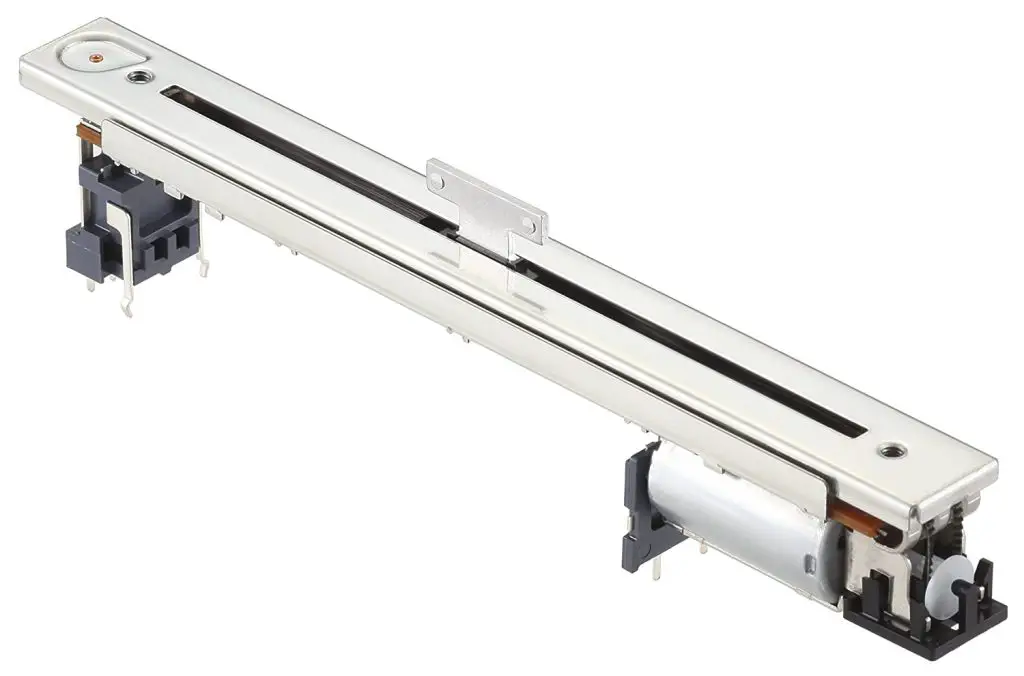
The mechanism of servo pots in rotary potentiometers is similar to motorized fader in linear potentiometers. In both cases, the control is automatically adjusted by a servo motor embedded in the pots. The servo motor in the motorized fader is visible in the figure given above.
Industrial Potentiometers
Potentiometers are commonly used to measure things like position, force, or voltage. However, due to their relatively simple design, they are not well suited for use in high-precision applications. This is where industrial potentiometers come in.
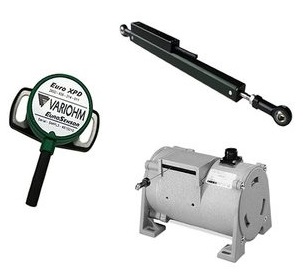
These devices are specifically designed for use in demanding environments and can withstand extreme temperatures, vibrations, and other harsh conditions. In addition, industrial potentiometers offer higher accuracy and repeatability than their standard counterparts.
Applications of Linear potentiometer
Linear potentiometers are one of the most versatile and widely used sensors in the industry. They are used in a variety of applications, such as:
- Measuring position, speed, or displacement.
- To control motors and actuators.
- Robotics.
- Volume control for audio equipment,
- Position sensing for automotive engine control systems
- Calibration for precision test equipment.
- Industrial Machines
- Medical equipment
In each of these applications, the position of the sliding contact must be accurately translated into an electrical signal. To achieve this, linear potentiometers typically use a conductive element, such as a metal rod or wire, to make contact with the resistive element.
This ensures that the resistance changes smoothly and evenly as the sliding contact is moved. Additionally, linear potentiometers often incorporate mechanical stops to prevent the sliding contact from moving beyond its intended range of motion.
What is the difference between linear and logarithmic potentiometers?
Linear potentiometers have a resistance that varies linearly with the physical position of the wiper, while logarithmic potentiometers have a resistance that varies logarithmically. Linear potentiometers are used when a direct relationship between position and output is needed, while logarithmic potentiometers are used in applications where human perception is logarithmic, such as audio volume controls.
Why are there 3 pins on a potentiometer?
Potentiometers typically have three pins because they function as variable resistors. One pin is for the input voltage, another for the output voltage, and the third serves as the reference point.
What is the most common type of potentiometer?
The most common type of potentiometer is the rotary potentiometer, which consists of a circular resistive track and a rotary control knob. This type is widely used in various electronic devices for controlling parameters such as volume, brightness, and frequency.
